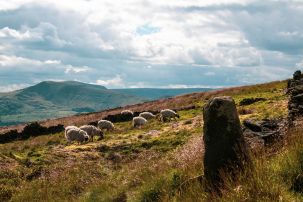Lesson summary
In this activity students look at how climate change may affect the food webs and the trophic relationships within them. Students begin by refreshing their knowledge of food webs by working as a class to create an African grassland food web. Students will then break into groups to explore a number of different ecosystems and will investigate how these ecosystems might be impacted by climate change. Students are asked to create a short film or animation sharing their research.
Learning intentions:
Students will...
- understand what is meant by food chain, food web, trophic level and trophic relationships
- understand that different ecosystems are comprised of unique food webs and trophic relationships
- recognise that climate change will have impacts on the integrity of food webs
- understand that although the impacts of climate change will affect different organisms in different ways, the whole food web will affected.
Lesson guides and printables
Curriculum links
Select your curriculum from the options below.
Lesson details
Curriculum mapping
Australian Curriculum content descriptions:
Year 7 Science:
- Interactions between organisms can be described in terms of food chains and food webs; human activity can affect these interactions (ACSSU112)
- Identify questions and problems that can be investigated scientifically and make predictions based on scientific knowledge (ACSIS124)
- Summarise data, from students’ own investigations and secondary sources, and use scientific understanding to identify relationships and draw conclusions (ACSIS13030)
- Communicate ideas, findings and solutions to problems using scientific language and representations using digital technologies as appropriate (ACSIS133)
Syllabus Outcomes: SC4-4WS, SC4-7WS, SC4-9WS, SC4-15LW.
Resources required
- Internet access
- Student worksheet
- Blackboard/whiteboard
- Computer-based or online movie or animation programs
- Animal names worksheet (click here to download)
- Ball of string
Additional info
This lesson has been created in partnership with WWF-Australia. Earth Hour is the world’s largest community-driven climate change campaign. At the centre of Earth Hour is switching off lights to show a commitment to taking action.
Thousands of teachers use Earth Hour’s education program to enrich their curriculum and provide pathways for young people to create change in their world.
For the most up to date Earth Hour dates, times, and events, check here.


Welcome back!
Don't have an account yet?
Log in with:
Create your free Cool.org account.
Many of our resources are free, with an option to upgrade to Cool+ for premium content.
Already have an account?
Sign up with:
By signing up you accept Cool.org's Terms and Conditions(Opens in new tab) and Privacy Policy(Opens in new tab).